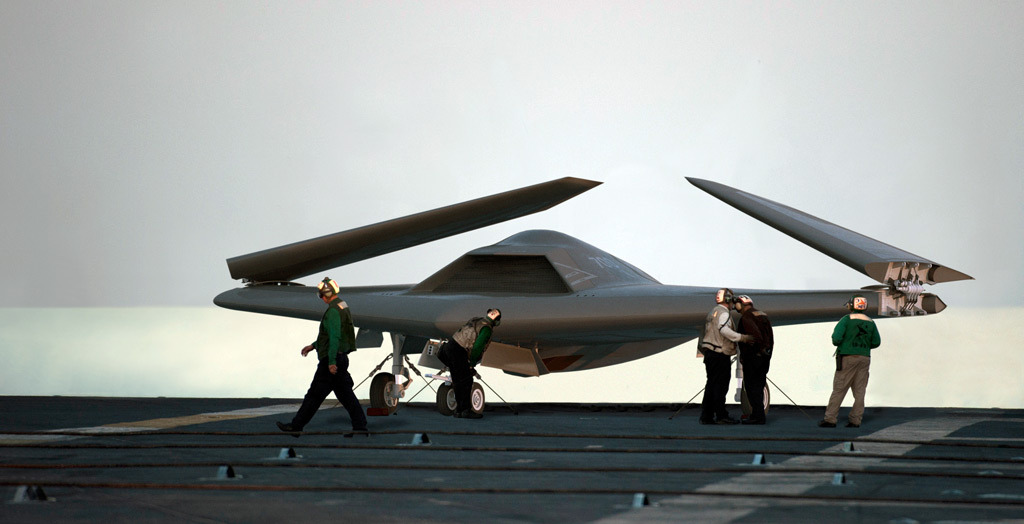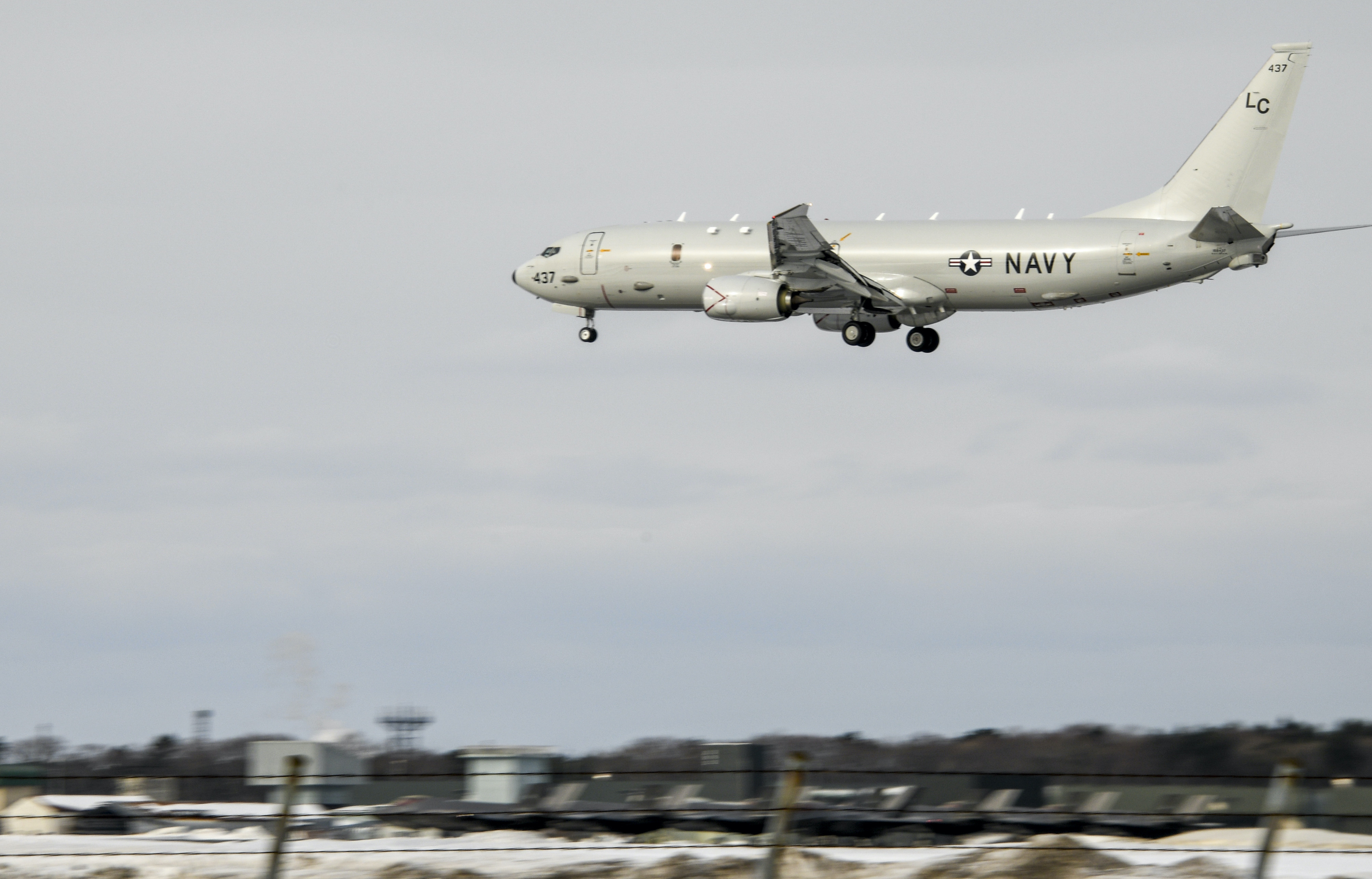
Naval Air Systems Command (NAVAIR) is “on the precipice,” of releasing a final restricted request for proposal (RFP) for its surveillance intensive unmanned carrier-based air vehicle (UAV), NAVAIR’s head of unmanned aviation told reporters on Sunday in Norfolk, Va.
The release will follow a Sept. 10 meeting of the Defense Acquisition Board (DAB) — led by vice chairman of the Joint Chiefs of Staff. Adm. James “Sandy” Winnefeld.
The DAB is set to give the final signoff on NAVAIR’s concept for the Unmanned Carrier Launched Airborne Surveillance and Strike (UCLASS), Rear Adm. Mat Winter — Program Executive Officer for Unmanned Aviation and Strike Weapons (PEO U&W) said.
Following the DAB, NAVAIR will release the RFP solely to Boeing, General Atomics, Lockheed Martin and Northrop Grumman — companies contracted with NAVAIR for the UCLASS Preliminary Design Review (PDR).
“We’re on the precipice on releasing the RFP to the four vendors that will participate,” Winter said.
“Pending final senior Department of Defense (DoD) discussions and final approval, which is now scheduled to occur over the next three weeks.”
However, NAVAIR’s UCLASS concept will still have to pass through an additional review by DoD Under Secretary of Defense Bob Work before it reaches the DAB.
USNI News understands the Work review is tentatively scheduled for the end of August.
The Work review — first reported in July — is an additional step in the acquisition process and delayed an anticipated July UCLASS RFP.
It’s unclear if Work’s review could continue to delay the UCLASS program or if its findings will prompt a reexamination of Navy’s current requirements.
‘Not the Next Generation Strike Fighter’

Winter went on to outline NAVAIR’s current direction for UCLASS.
“It allows our manned assets to then focus on those inherently manned warfighting tasks, to be more efficient there,” Winter said.
“UCLASS is not the next generation strike fighter. It’s not the next generation E2. It’s truly the first time we put an unmanned carrier asset into the carrier air wing but we know the capabilities that we’re looking for it to execute.”
Those capabilities state an orbit of two UCLASS should fly two — unrefueled — around the carrier at 600 nautical miles, or one at 1,200 nautical miles with an internal munitions payload of 1,000 pounds for $150 million an orbit.
However some claim the technical requirements underneath the broad outline have shifted significantly.
The Senate Appropriations Committee on Defense (SAC-D) expressed concern over the shifting requirements for the program.
“The Committee is concerned that the Navy is proceeding with UCLASS development prior to the formal establishment of stable requirements,” reads the SAC-D mark.
“For example, earlier this year, the Navy issued a second draft request for proposals for the air segment, which included changes to the key performance parameters from the original draft.”
‘Art of the Possible’

Winter said NAVAIR refinements over the life of the program were to define the, “art of the possible.”
“We’ve gone back and forth with the warfighter and then we’ve gone back and forth with industry to make sure if this is the art of the possible. I’ve got really smart engineers and they go ‘maybe, maybe not,’ let’s talk about it. That’s what the last nine months have been,” he said.
“What we’ve done is provide a technical specification that has been shared with the four industry partners and they’ve all looked at that — and though each of them have their own pros and cons based upon their own business and technical strategies they’ve chosen to pursue. All of them have provided back that this is the art of the possible.”
Navy officials have also claimed there are technical limitations in creating a stealthy, heavily armed UCLASS inline with the original 2006 concept outlined in the Quadrennial Defense Review (QDR).
The 2006 QDR directed the Navy to develop a Navy-Unmanned Combat Air System (N-UCAS), “to provide greater stand-off capability, to expand payload and launch options, and to increase naval reach and persistence.”
Since then, service officials claim there are technical restrictions in creating the capability outlined in the 2006 QDR.
“I heard some earlier comments about an eight to 10 hour aircraft that could carry 4,000 pounds and could not be seen by anybody — and frankly — that doesn’t exist. It does not exist. And it’s not technically achievable today,” Vice Adm. Paul Grosklags, principle military deputy to the assistant secretary of the Navy for research development and acquisition told the House Armed Services Subcommittee on Seapower and Projection Forces on July 16.
What also remains unclear is exactly how an aircraft originally created to penetrate enemy air defenses with a significant payload became a primarily an information, surveillance, reconnaissance and targeting (ISR&T) aircraft.
Winter did not illuminate the issue on Sunday.
“When you talk about where we are today, versus where we were, there’s been a lot of programmatic, political and warfighter realities that have emerged,” he told reporters.
“But I won’t do is go back into the history of how and why and so forth and so on.”
The Navy’s Fiscal Year 2015 budget submission included $403 million to develop the UCLASS program, which the service plans to field by 2020.





